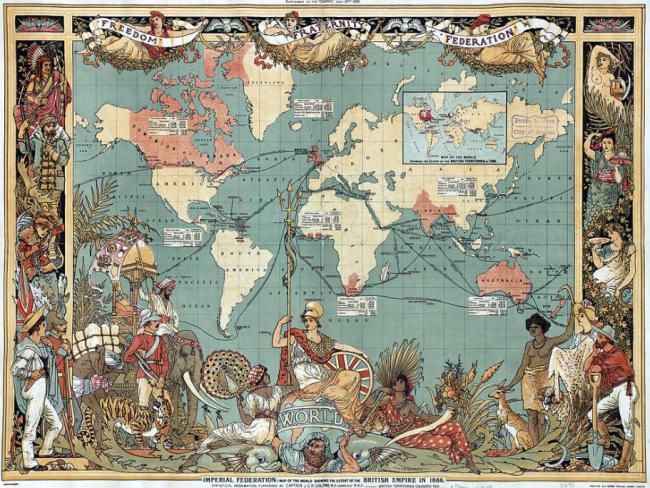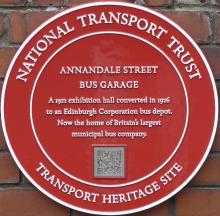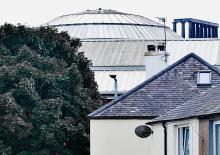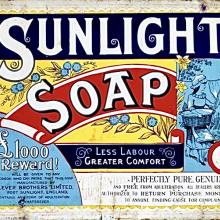
The excitement of empire, capitalism and cleanliness
One week ago, we began this series with a brief history of how vacant land on Annandale Street came to be converted into the capital's first purpose-built exhibition space.
Within weeks of its completion, the new Industrial Hall (later to become Lothian Buses' depot) was ready to host its inagural event in autumn of 1922. We quote below from the Scotsman (20 September 1922).
*****
After the great success of the 'Groceries' Exhibition in the Waverley Market last November, it is not surprising to find that a beginning is to be made in the new hall with a Scottish Grocers’, Bakers’, Confectioners’, and Allied Trades Exhibition on October 11.
All the stands are now booked up by firms in every part of the country, Edinburgh providing its quota of exhibitors. It is likely to be one of the biggest trade exhibitions ever held in Scotland, and will dwarf the promotion of last November. The success of that exhibition was embarrassing, but the inconveniences then inevitable because of the limited space available should not now be felt. A mile will be covered in walking round every avenue in the “Groceries.” In the evenings, when the fifty 500 c.p. lamps are lit, and something like 1200 lights used by the exhibitors, the hall will present a brilliant spectacle.
It was hoped that the opening ceremony would have been performed by His Majesty the King. Owing to other engagements having been made by His Majesty during his visit to Scotland, he was unable to accede to the request, but his Grace the Duke of Atholl, K.T., Lord Chamberlain of His Majesty’s Household, has consented to declare open the Industrial Hall. His Grace is to be accompanied by the Duchess of Atholl. An invitation has been extended to the Magistrates and Town Councillors to attend the ceremony in their official capacity.
Music is always an outstanding feature of exhibitions of the kind, and engagements have been made with the King’s Dragoon Guards’ Band from 11th to 18th October, and the band of the 1st Battalion Highland Light Infantry from the 19th to the 25th. On one day, the programme will consist entirely of Sullivan music.
Arrangements have been made with the North British and Caledonian Railway during the holding of the exhibition.
An item of interest to those keen on tennis and badminton is that provision has been made in the Hall enabling these games to be played when the building is not otherwise engaged, there being accommodation for a large number of courts.
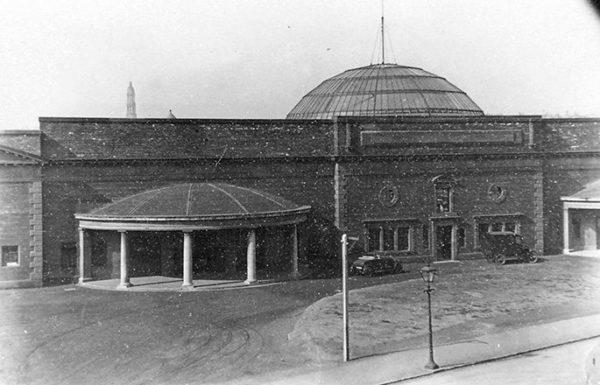
Image: Courtesy of Lothian Buses.
The romance of soap
Reviewing the inaugural exhibition 1 month later, the Scotsman enthused about the large crowds which had attended it, reaching an average of between 10,000 and 15,000 on Saturday evenings.
While tea, coffee, cocoa, confectionery and Marmite drew the Scotsman correspondent’s attention, it was the ‘Romance of Soap Industry’ which floated his boat in particular. From the Scotsman (18 October):
It is in keeping with the important place soap holds in our domestic arrangements to find that it probably forms the largest single section in the Exhibition. The variety of forms in which it is produced is a source of wonder to the casual onlooker.
Not so obvious, but of greater significance, is the world-wide organisation that enables this everyday article to be brought into our households for a few coppers. In the search for and production of the necessary raw materials, tropical countries are opened up, and civilising influences follow the flag of trade. Romance and far-sighted business initiative move in company.
The homely piece of soap which passes across the grocer’s counter also affords a striking illustration of the complex trade built on such a simple commodity. After the employer has blazed the trail, the scientist and the industrial organiser follow in his footsteps, native labour is requisitioned, and great ships transport to our shores the raw material which is the basis of great industrial concerns.
… A visit to Stand 174, Avenue G, is something in the nature of an object-lesson in the science of eliminating dirt. Here there is something to do battle in every branch of domestic hygiene, something to introduce cleanliness, brightness and beauty into the home. Sunlight, Lifebuoy, Lux, Vim, Velvet Skin toilet soap, Twink: dyes—names that are ever before one’s eyes—make a goodly and interesting feature of the exhibition. … The feeling that one gets from a consideration of this great soap enterprise is one of pride in British industrial genius.
In our next article on this theme (15 August), we will turn to the exciting programme of events in early 1924.
